Puglia is like Italy’s best-kept secret! Tucked down in the “heel” of Italy’s boot, this region is bursting with stunning coastline, ancient olive groves, and those adorable trulli houses you’ve probably seen in pictures.
And the vibe? Totally laid-back, with friendly locals and plenty of hidden spots to explore.
So, if you’re looking for that perfect blend of culture, scenery, and great food without the big crowds, Puglia is calling!
This travel guide to Puglia has everything you need to dive into the magic of Italy’s iconic heel.
Love this? Don’t forget to check out your ultimate seasonal handbook on Best Time Visit Italy AND 29 Essential Italy Travel Tips to plan out the perfect Italian trip!
Where Is Puglia In Italy?
Apulia also known by its Italian name Puglia is in southern Italy, stretches along the Adriatic and Ionian Seas, giving it miles of beautiful coastline. The region is bordered by Basilicata to the west and lies across the water from Albania, which is why you’ll notice some unique Mediterranean influences in the culture and architecture.
What is Puglia Italy known for?
Puglia is where Italy goes a little wild and untouched, with a coastline that seems to go on forever and countryside dotted with olive trees as old as time.
It’s a place where you can wander through historic towns like Lecce and Alberobello, relax on dreamy beaches, and feast on mouthwatering pasta, fresh seafood, and local wines.
It’s Italy with a twist-authentic, scenic, and full of charm!
Travel Guide To Puglia
14 The Best Places To Visit in Puglia
1. Alberobello
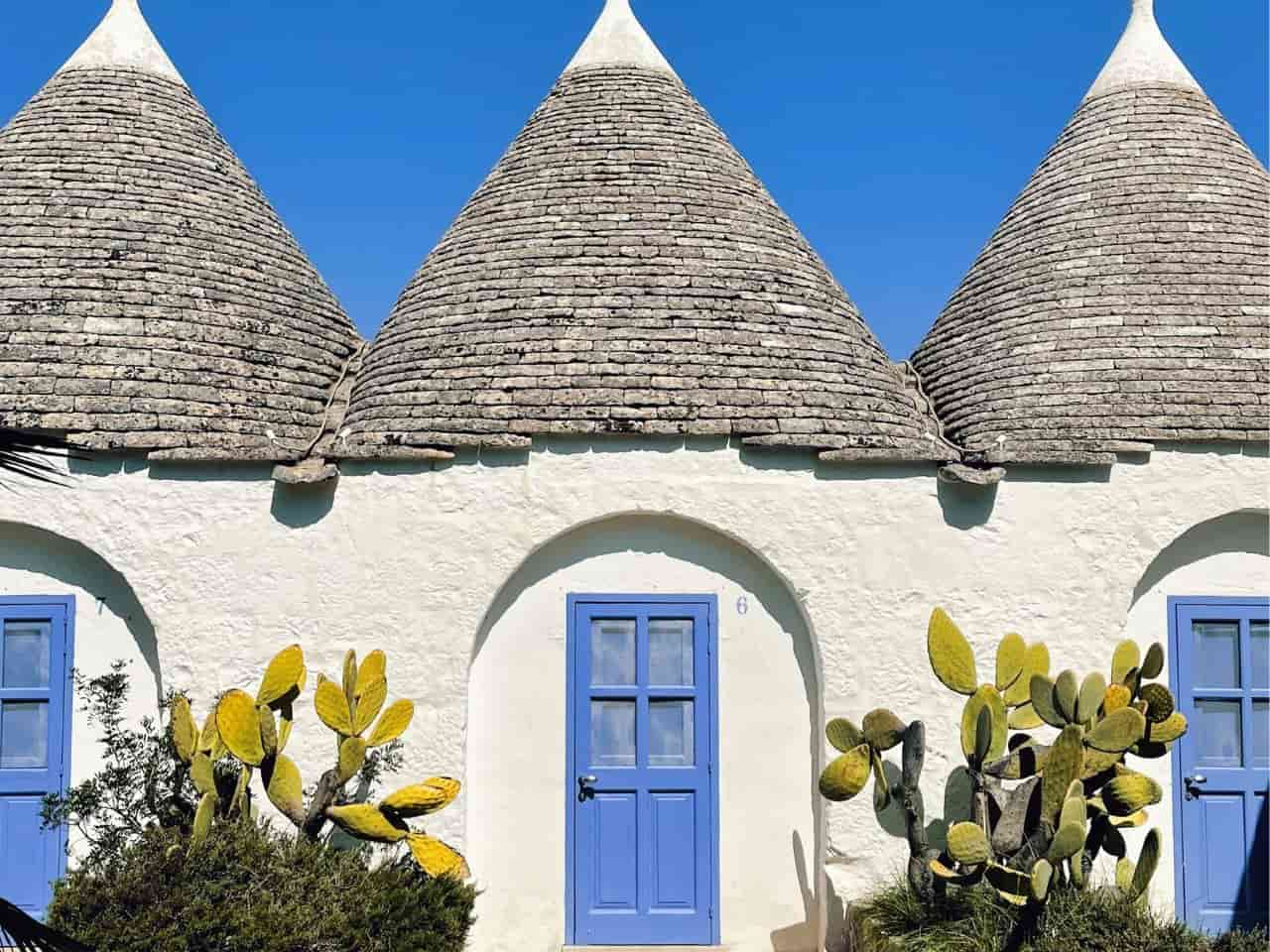
This travel guide to Puglia is incomplete without mentioning Alberobello, an amazing spot – straight out of a fairytale with its famous trulli, those adorable, white, cone-roofed houses that look like they belong in a fantasy novel!
Its history is as unique as its trulli! These quirky houses date back to the 14th century, when the Counts of Conversano had locals build without mortar to dodge property taxes-if tax inspectors were around, the houses could be quickly dismantled.
The style stuck around, and over the years, these cone-roofed homes became a symbol of the town, and now they’re one of Italy’s quirkiest architectural wonders.
In the 18th century, when residents finally got the rights to their homes, Alberobello became one of the historic towns in Puglia.
Walking through the narrow streets of this UNESCO World Heritage town, celebrated for its quirky architecture and fascinating backstory, you’ll feel like you’ve stepped back in time.
Don’t miss Rione Monti, the area where you’ll find the highest concentration of trulli, many now turned into little shops, cafes, and even boutique hotels. It’s a bit touristy, but totally worth it, especially for photos.
You’ll also find Trullo Sovrano, the only two-story trullo in town, which is now a museum offering insight into how people used to live here.
For a more peaceful vibe, check out Aia Piccola, a quieter, less crowded area of trulli where locals still live.
Here you’ll find my in-depth guide to visit Alberobello!
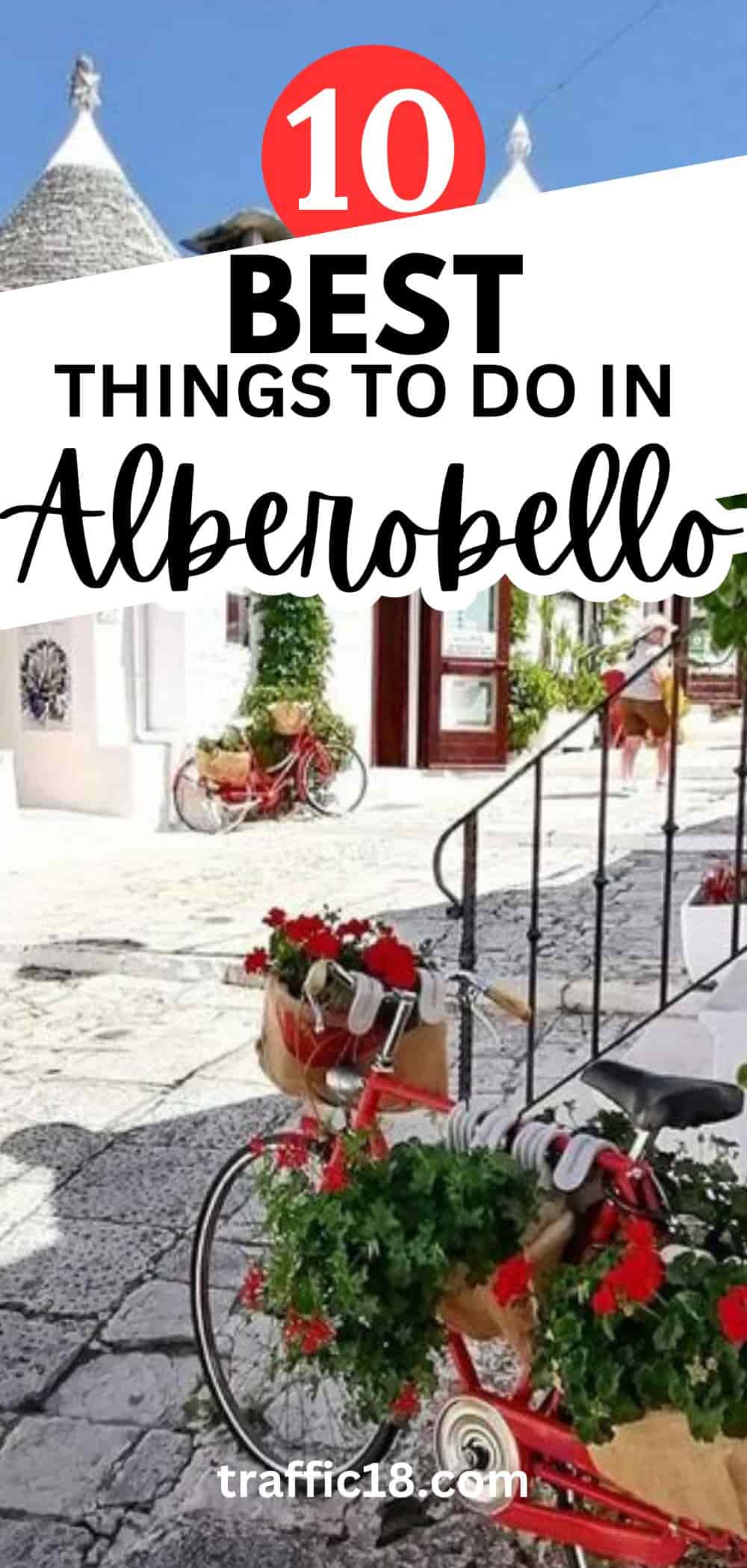
A quick tip!
To avoid the peak crowds and heat, visit in early morning or late afternoon, especially during the shoulder seasons like spring (April to early June) or fall (September to October). Summers can get crowded and hot, but if you go in the off-season, you’ll have the winding streets almost to yourself.
2. Ostuni
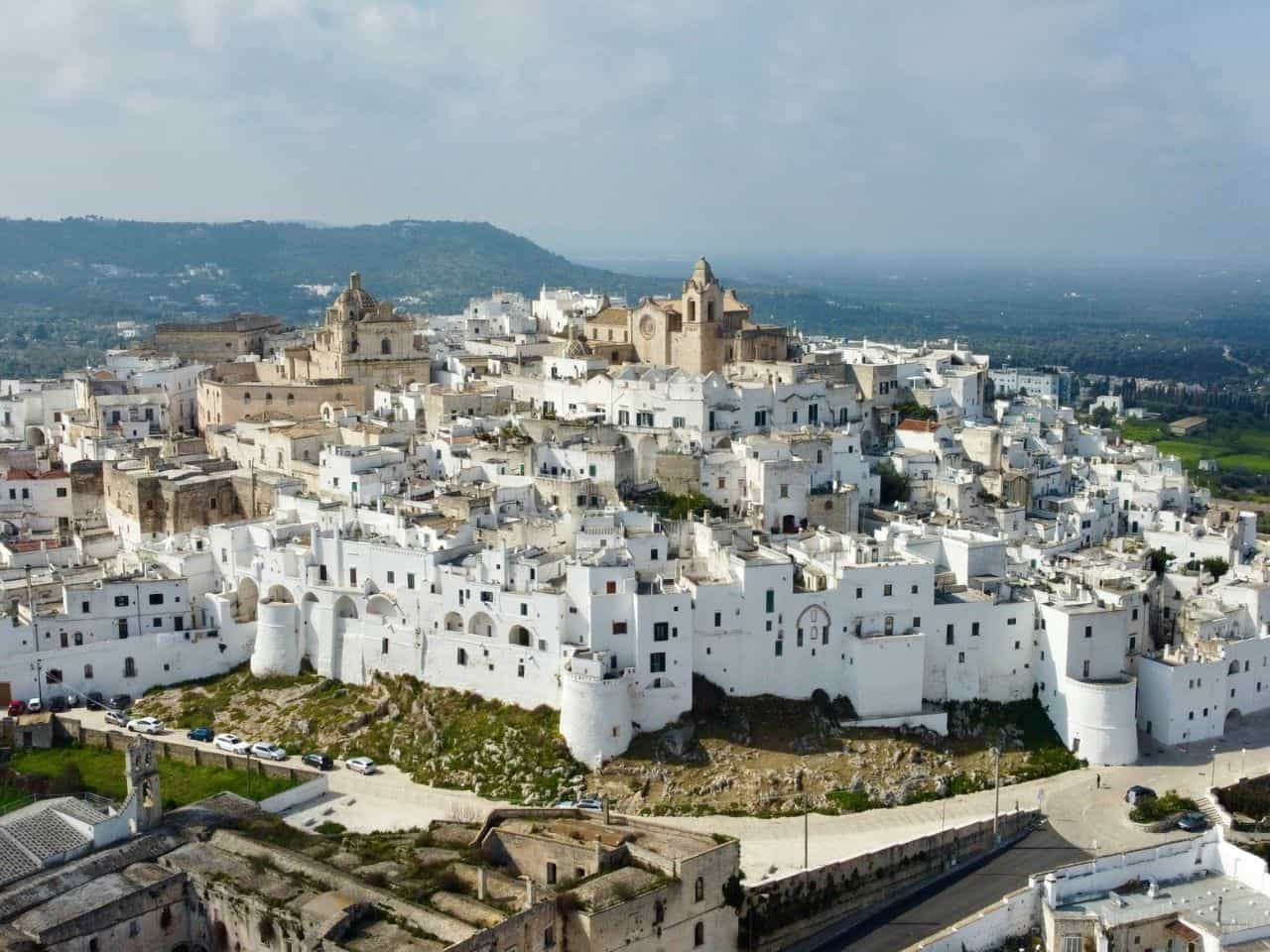
Ostuni, also called the “White City,” is like stepping into a sunlit dream! Perched on a hill, this dazzling whitewashed town is one of Puglia’s most iconic spots and for all the right reasons.
Its history dates back to ancient times, but its real charm shines from its medieval past when the labyrinth of narrow streets, arches, and staircases were built to defend against invaders.
As you wander through, every turn offers picture-perfect views of blue skies, white walls, and the olive-studded countryside rolling out to the Adriatic coastline.
Start your exploration at Piazza della Libertà, the lively heart of the town, where you can admire the towering Column of St. Oronzo. Then head up to the Ostuni Cathedral, a stunning Gothic-Romanesque masterpiece that stands proudly at the top of the hill.
Don’t skip the charming side streets where you’ll find boutique shops, cozy cafes, and hidden courtyards perfect for a quiet moment. If you love history, check out the Museum of Preclassic Civilization, showcasing archaeological finds from the region.
Ostuni is a food paradise! Local trattorias serve up Puglian specialties like orecchiette pasta, bombette (stuffed meat rolls), and freshly caught seafood. Pair your meal with a glass of local Primitivo wine-it’s a match made in heaven. For dessert, don’t miss pasticciotti, the creamy custard-filled pastries that are a regional favorite.
And for a countryside escape, Ostuni offers some of the best beaches nearby, like Torre Guaceto Nature Reserve or Lido Morelli surrounded by one of the best olive groves in Puglia.
A quick tip!
Plan your visit in the spring or fall -April to early June or September to October are perfect for enjoying pleasant weather and quieter streets. Mornings and late afternoons are also ideal for soaking in the charm without the hustle of tourists.
3. Lecce
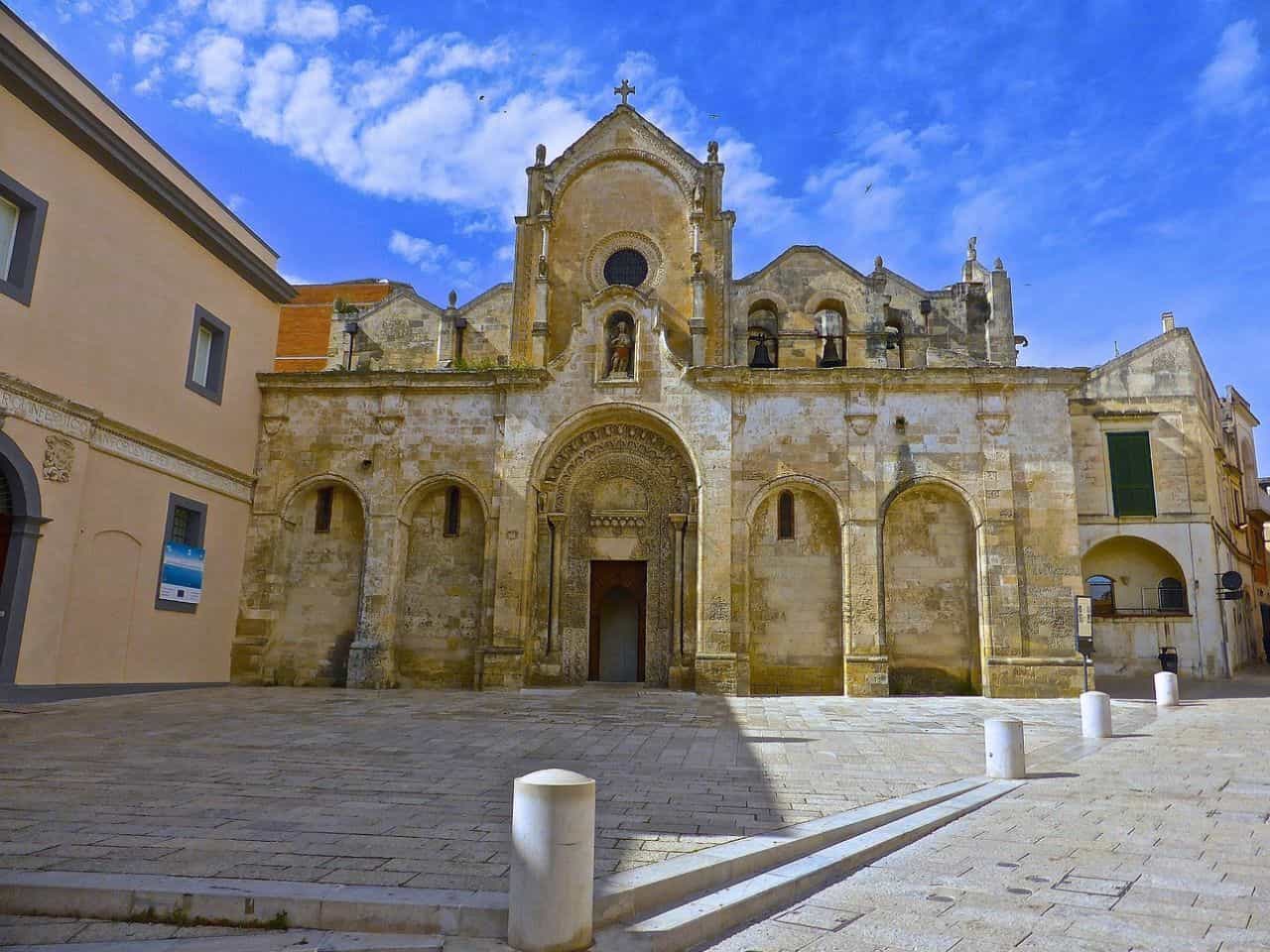
How can I miss the “Florence of the South” in this list of best places to visit in Puglia since Lecce is not just a masterpiece of Baroque architecture but its the city like an open-air museum with its ornate churches, carved facades, and beautiful piazzas.
One of the most iconic places that you just can’t miss is the Basilica di Santa Croce, a stunning Baroque church with intricate carvings of cherubs, animals, and mythical creatures. The Lecce Cathedral and Piazza del Duomo are equally breathtaking, especially when the buildings glow at sunset.
Don’t miss the Roman Amphitheater right in the center of town-an incredible glimpse into Lecce’s ancient past where gladiators once fought, and concerts still take place today!
And if you’re an art lover, Museo Faggiano is a hidden gem, with layers of history uncovered during a house renovation that led to the discovery of artifacts from multiple centuries.
Wandering through Lecce architecture of old streets, you’ll find artisan workshops selling paper-mâché figurines and local ceramics-a tradition unique to the city.
Foodies are in for a treat too, with delicious local fare like rustico leccese (a pastry stuffed with béchamel, mozzarella, and tomato) and pasticciotto – delectable pastry originating from Lecce (a sweet custard-filled pastry).
A quick tip!
Spring (April to June) and fall (September to October) are the best times to visit Lecce if you want to avoid the heat and the crowds, but still enjoy lively streets and pleasant weather. Summers are beautiful but busier, so it’s great if you love a lively, festive atmosphere. And if you’re a festival-goer, visiting in August during La Notte della Taranta means you’ll experience the largest traditional music festival in Italy!
4. Polignano a Mare
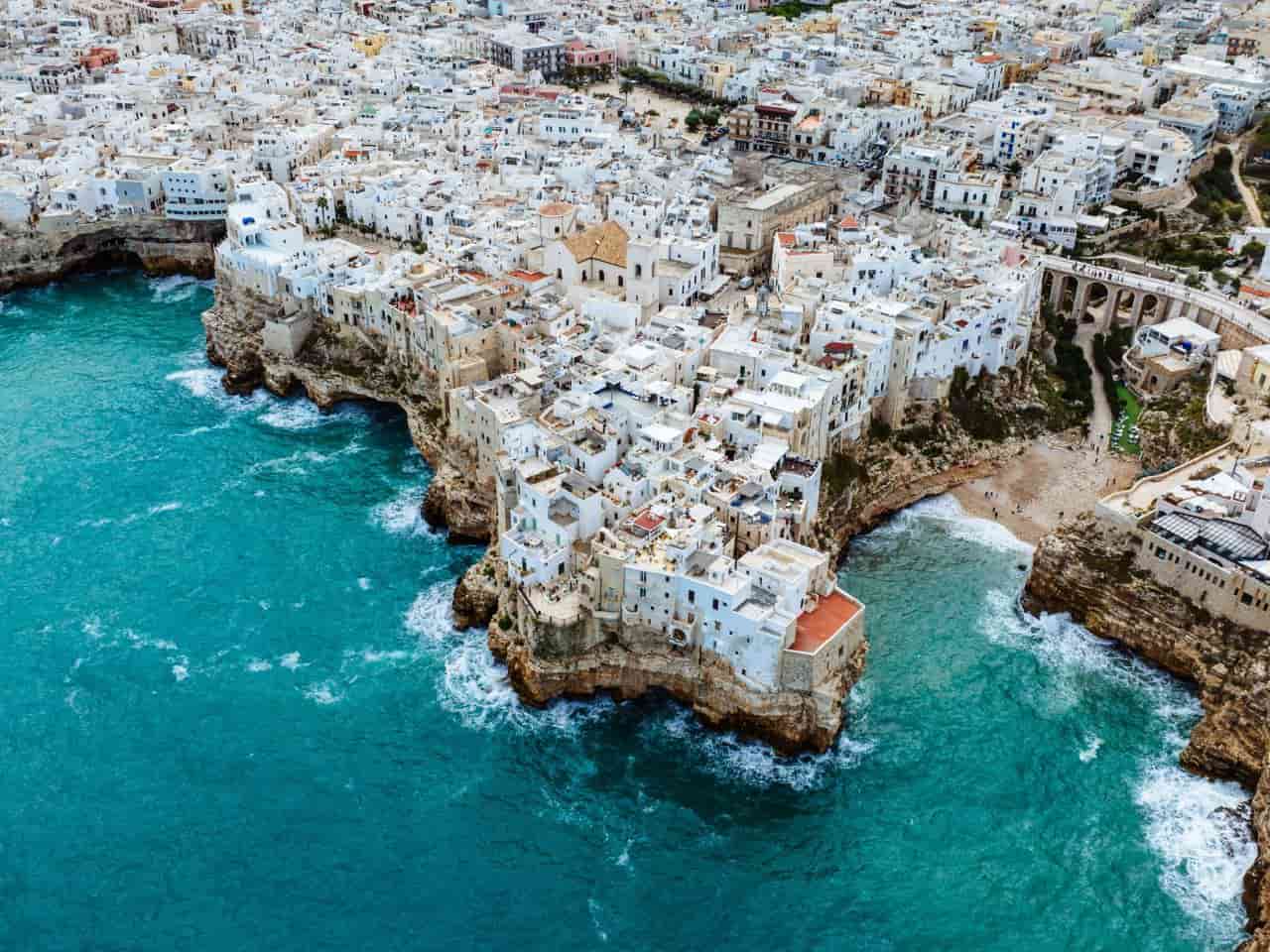
Known as the “Pearl of the Adriatic,” this place is all about jaw-dropping views, rich history, and incredible experiences that will leave you completely enchanted.
Food is another reason Polignano a Mare is a must-visit. You can’t leave without trying specialties like orecchiette pasta, fresh seafood, and gelato at Super Mago del Gelo, a famous spot for its signature coffee-based dessert called Caffè Speciale.
Historically, Polignano a Mare has roots going back to Greek settlers, and later became an important Roman port. You can still feel the whispers of its past as you wander through the Centro Storico, a labyrinth of narrow, whitewashed streets lined with quaint houses and poetic verses painted on walls.
Don’t miss the Roman Bridge in the Lama Monachile area-this ancient bridge was part of the Via Traiana, a Roman road connecting cities across Puglia.
One of the highlights here is Lama Monachile Beach, a tiny cove with crystal-clear waters surrounded by dramatic cliffs. It’s postcard-perfect and ideal for swimming or just soaking up the sun.
If you’re looking for something more adventurous, the cliffs are famous for cliff diving! The Red Bull Cliff Diving World Series even stops here-how cool is that?
For a different perspective, hop on a boat tour to explore the coastline and the sea caves, like the stunning Grotta Palazzese, which also happens to house one of the most unique restaurants in the world.
A quick tip!
Plan your visit during spring (April to June) or early fall (September to October). The weather is perfect, and you’ll have those picturesque views mostly to yourself. Summer is peak tourist season, so it’s busier, but the lively vibe might be exactly what you’re looking for if you enjoy the hustle and bustle.
WANT TO EXPLORE MORE?
Sign up for my newsletter and I will email you every time I have something new to say!

5. Gallipoli
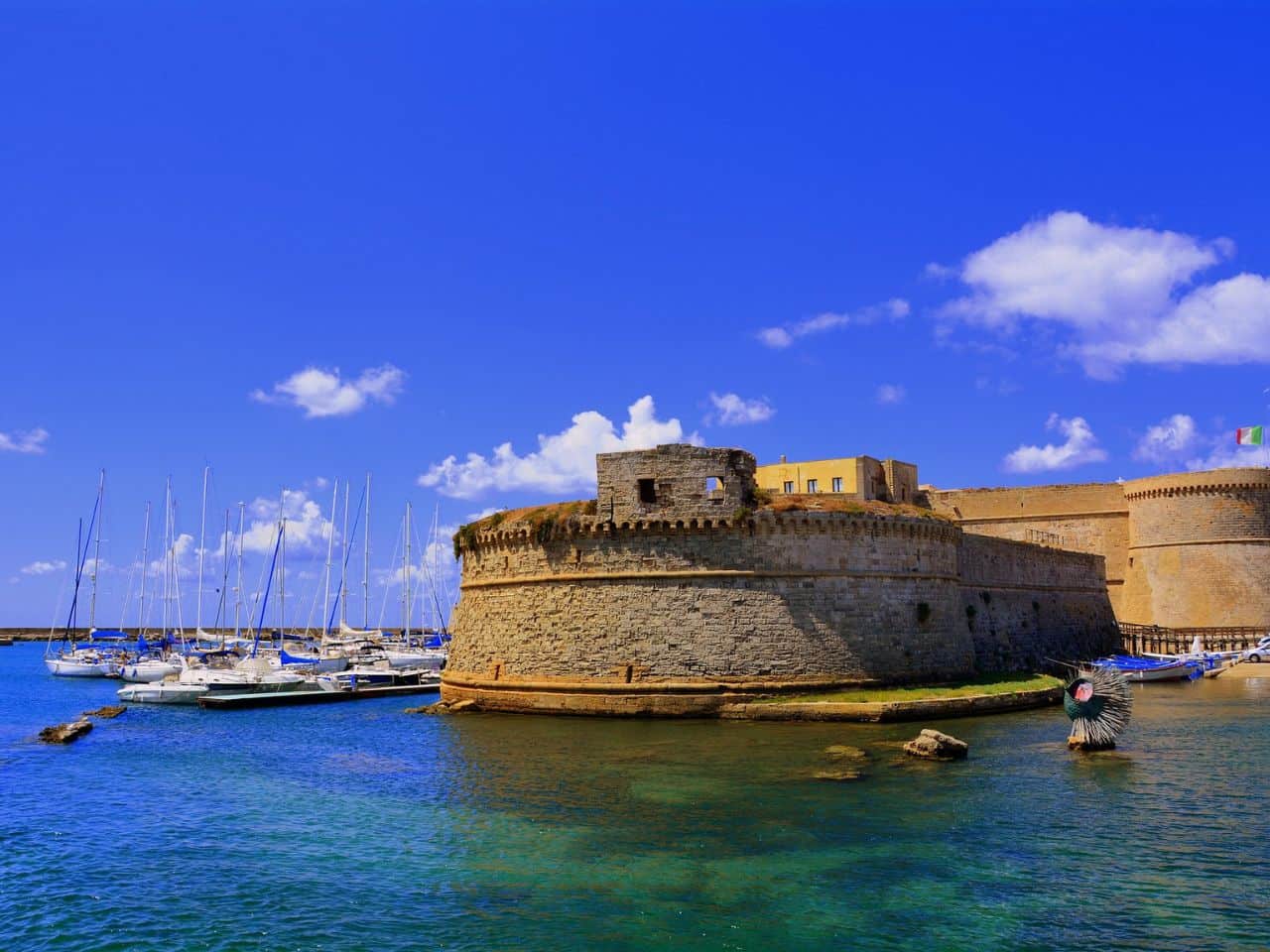
Gallipoli, often called the “Jewel of the Ionian Sea,” is hands down one of the best places to visit in Puglia.
This seaside town perfectly blends rich history, gorgeous beaches, and a lively atmosphere that’ll leave you hooked. Its name, derived from the Greek Kallipolis, means “beautiful city”-and trust me, it lives up to that title!
Gallipoli is split into two parts: the Old Town (Centro Storico), sitting on a small island connected by a bridge, and the modern new town on the mainland. The Old Town is a time capsule of history, filled with narrow cobblestone streets, charming whitewashed buildings, and stunning baroque architecture.
Historically, Gallipoli was a strategic port controlled by the Greeks, Romans, and Byzantines before flourishing under Venetian and Spanish rule. Its location made it a hotspot for olive oil production and trade-fun fact, it was once a major exporter of lamp oil!
You can explore its historical significance at the Frantoio Ipogeo, an underground olive press that gives you a glimpse into its oil-making past.
When you’re in Gallipoli you just can’t miss to visit its Castello Angioino-Aragonese which is an imposing fortress guards the entrance to the Old Town and offers panoramic views of the coastline.
Gallipoli is surrounded by pristine spots. Baia Verde, just south of town, is famous for its soft sand and turquoise waters. It’s also a hotspot for nightlife in summer, with beach clubs hosting DJ sets under the stars.
Spiaggia della Purità beach is literally steps away from the Old Town’s walls, with golden sands and crystal-clear water. Perfect for a quick dip with some sunbathing.
Gallipoli’s cuisine is a seafood lover’s dream. From freshly caught fish to classic dishes like ricci di mare (sea urchin), your taste buds are in for a treat.
A quick tip!
To avoid the summer crowds and enjoy a more relaxed vibe, plan your trip in May, June, or September. These months offer warm weather without the overwhelming tourist rush. July and August are peak seasons, so while it’s lively and buzzing, it’s also quite busy.
6. Monopoli
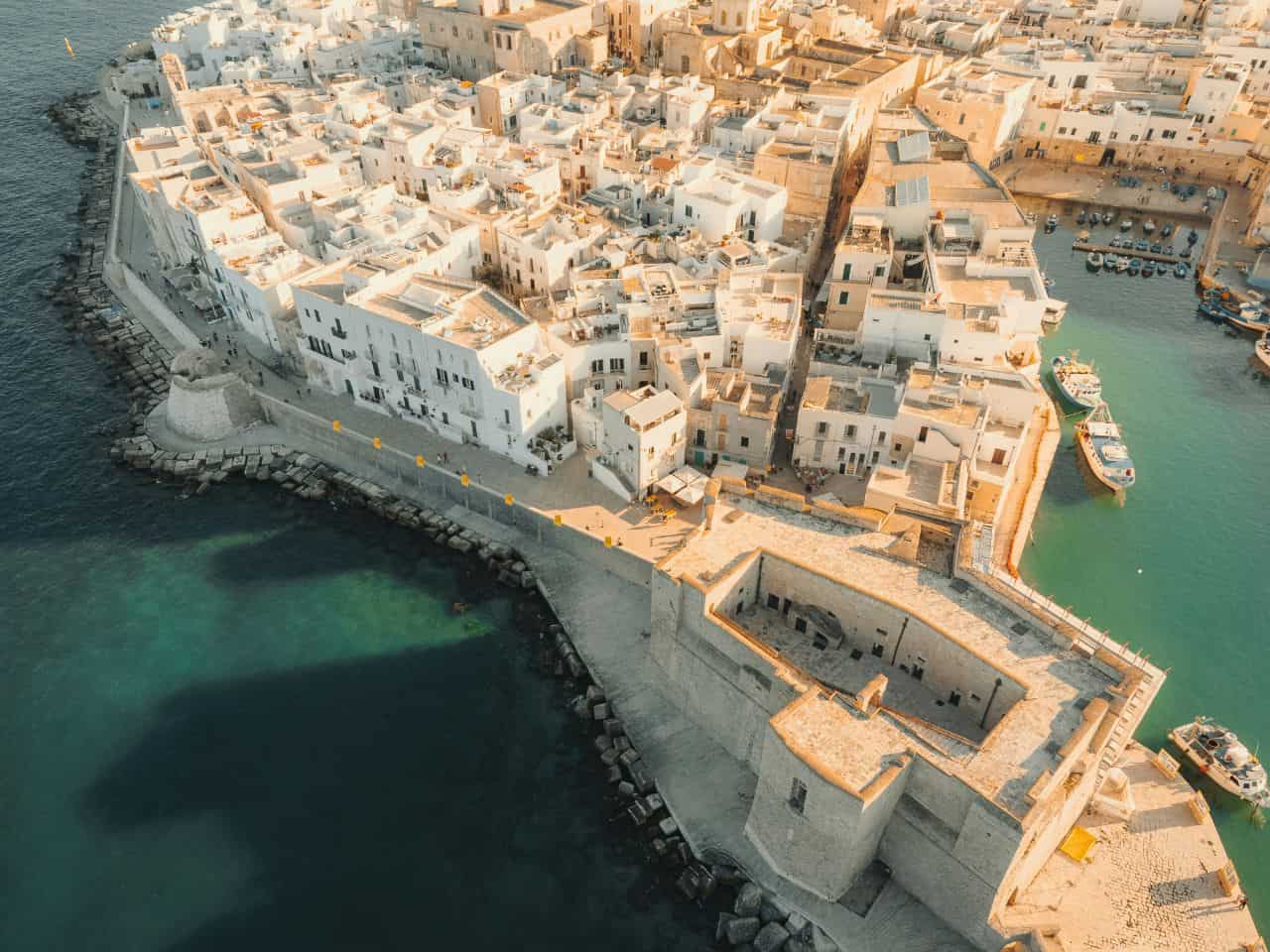
Monopoli, a charming coastal gem in Puglia, is one of those places that steals your heart the moment you arrive. Its charm lies in its authenticity. While some places in Puglia might feel overrun by tourists, Monopoli still holds onto its local vibe.
The bustling Piazza Giuseppe Garibaldi is a great place to sip an espresso and people-watch. The town’s weekly market is also a treasure trove of local produce, crafts, and tasty treats!
Wandering through Centro Storico Monopoli’s old town feels like a dream. Narrow alleys lined with bright bougainvillea lead you to hidden courtyards and cozy cafes.
Sitting proudly by the sea, Castello Carlo V is the 16th-century castle that offers incredible views and a dose of history. It’s a great spot for photography and learning about Monopoli’s defensive past.
Don’t forget to visit the stunning Baroque cathedral – Cattedrale di Maria Santissima della Madia houses a miraculous Byzantine icon of the Virgin Mary, believed to have saved the city.
Porto Antico (Old Port) is another peaceful spot where you can watch fishermen mend their nets and colorful boats bob in the harbor. It’s postcard-perfect! Here trying some fresh seafood is a great joy since the harbor-side restaurants serve the catch of the day, and it’s as fresh as it gets.
Not just that Monopoli boasts some of Puglia’s best beaches, like Cala Porta Vecchia and Cala Paradiso, ideal for sunbathing, swimming, or simply unwinding with a book.
Even you can rent a bike to explore the coastal trails around Monopoli. You’ll get to see some hidden coves with scenic viewpoints.
A quick tip!
It is best enjoyed in late spring (May-June) or early fall (September-October). The weather is warm and sunny, but you’ll avoid the heavy summer crowds. During these times, you can explore comfortably and even enjoy some serene beach days.
If you’re visiting in August, the Madonna della Madia Festival is a unique experience, with a beautiful procession and celebrations.
7. Bari
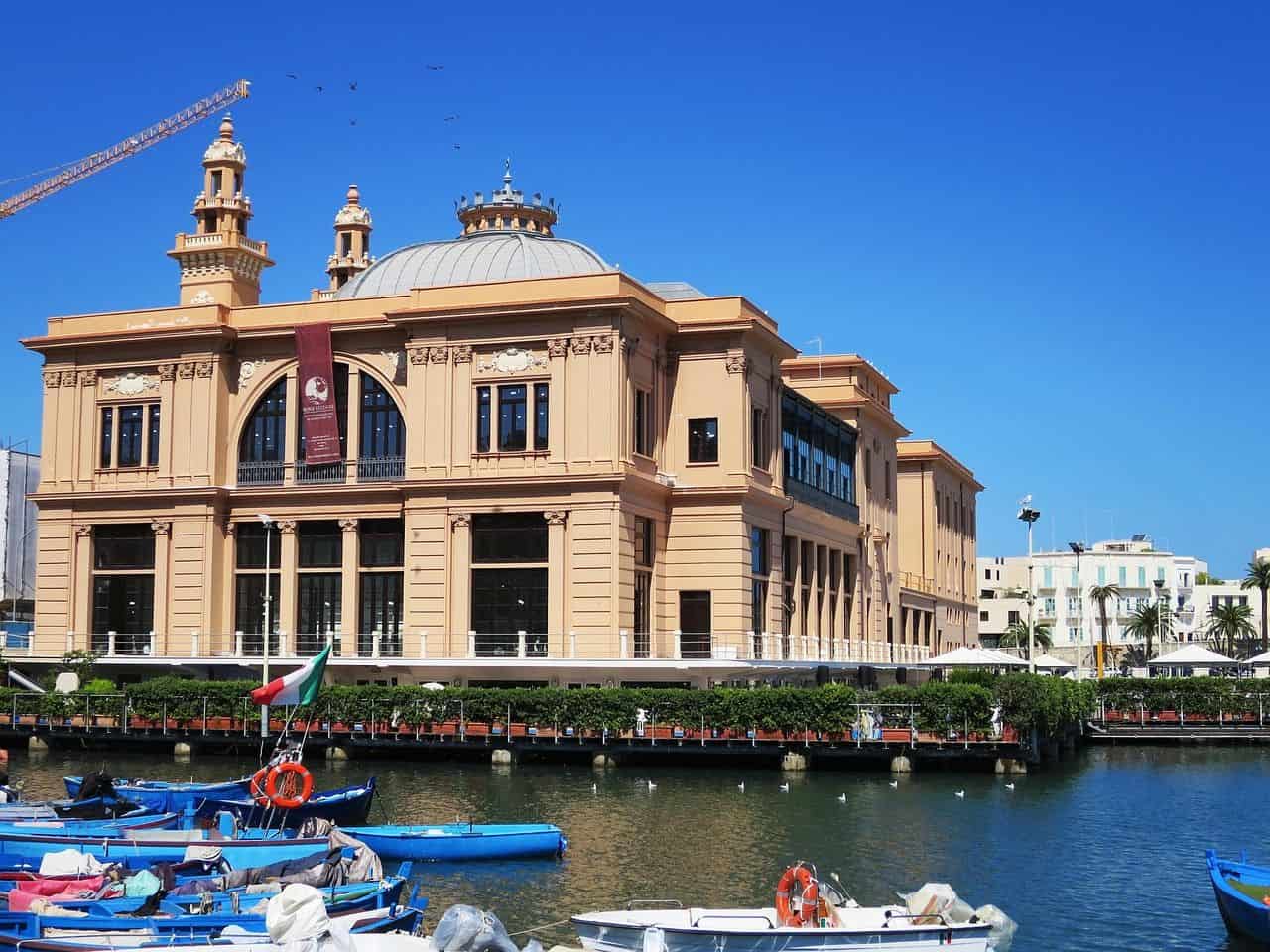
Being the capital of Puglia, Bari is an absolute must-visit if you want to experience the perfect mix of history, culture, and modern vibes. This bustling port city is like a gateway to the Adriatic, but it’s so much more than a transit hub.
Bari’s history is fascinating. It was once a significant Roman port, later conquered by the Byzantines, Normans, and even the Venetians. Each era left its mark on the city, creating a rich tapestry of cultural influences.
Today, it’s a vibrant blend of past and present, where ancient alleys meet buzzing piazzas!
Bari Vecchia which is an old town is the heart of the city and an absolute maze of winding streets. It’s where you’ll find locals making fresh pasta right outside their homes!
Another gem is Basilica di San Nicola, an iconic church that is a pilgrimage site for Catholics and Orthodox Christians alike, housing the relics of Saint Nicholas (yep, Santa Claus!).
For a modern twist, head to Murattiano District, the newer part of Bari with chic shops, cafes, and restaurants. And if you’re into opera or theater, then Teatro Petruzzelli, an ornate venue, is a masterpiece and hosts fantastic performances.
You can then visit Lungomare Nazario Sauro – Bari’s seafront promenade is perfect for a leisurely walk or bike ride, with stunning views of the Adriatic Sea.
And the food?
Oh, where do I even start?
Try the orecchiette pasta, fresh seafood, and the famous focaccia barese. And the local gelato is also to die for!
A quick tip!
To enjoy Bari without the chaos of peak season, visit in May, early June, or September. The weather is sunny and warm, but you’ll skip the massive summer crowds. If you’re visiting in December, the Feast of Saint Nicholas is an incredible cultural experience, with processions and festivities.
Don’t rush through Bari thinking it’s just a stopover-spend at least two days exploring.
8. Matera
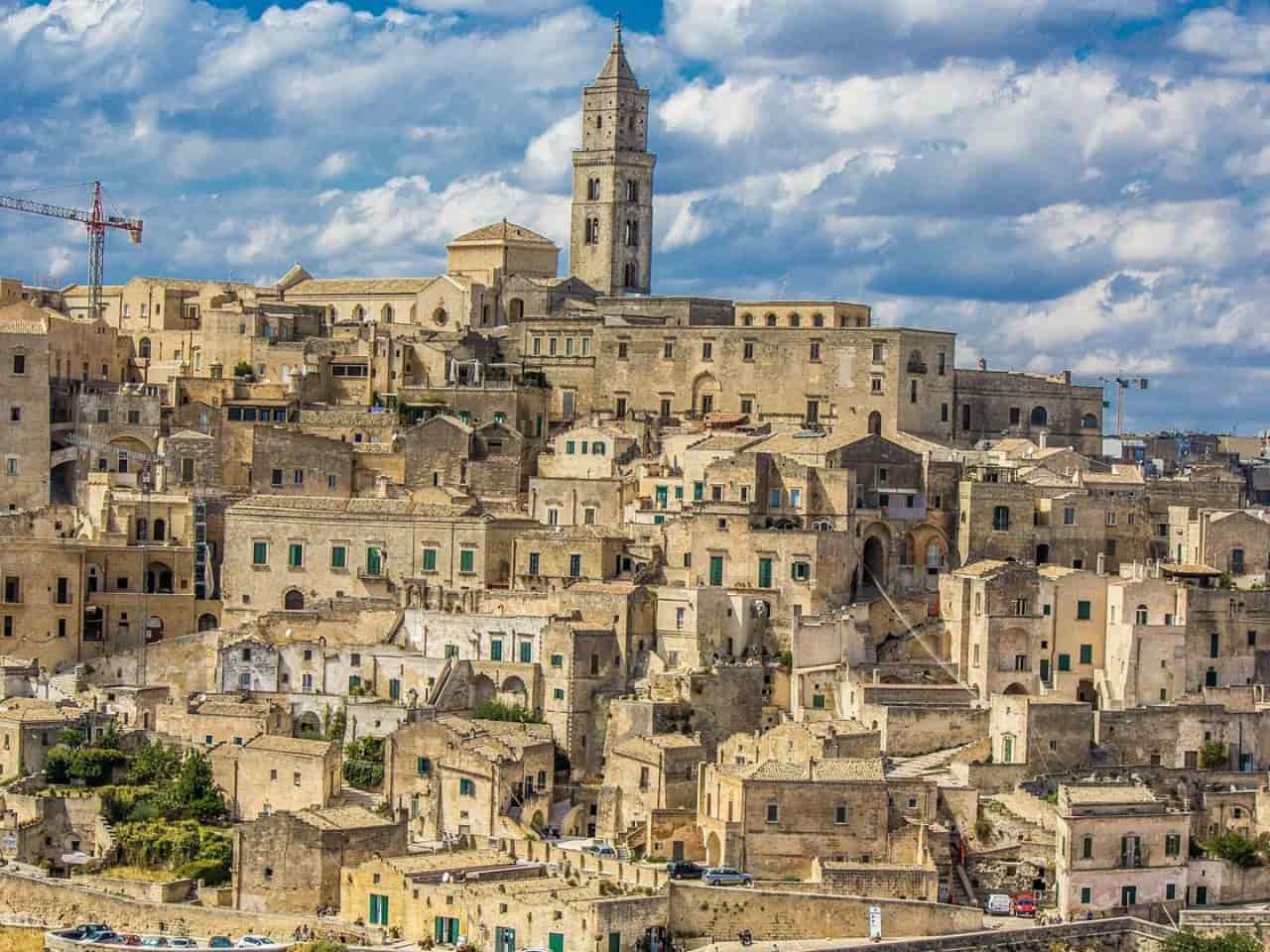
Trust my words – Matera is pure magic! It’s like stepping into a time machine and landing in a prehistoric village that somehow feels alive and thriving today. Famous for its ancient cave dwellings, called Sassi, Matera is not just a must-visit in Puglia-it’s a once-in-a-lifetime destination that blends history, culture, and jaw-dropping beauty all in one frame.
Matera is one of the oldest continuously inhabited cities in the world, with roots dating back 9,000 years.
Yes, you read that right! The Sassi di Matera, the ancient cave homes carved into the limestone hills, were originally dug out by prehistoric humans.
Fast forward through history, and these caves became homes, churches, and businesses. By the mid-20th century, the city was abandoned due to poor living conditions, but a massive restoration effort brought it back to life.
In 1993, Matera became a UNESCO World Heritage Site, and in 2019, it was crowned the European Capital of Culture!
Start by wandering through the two districts, Sasso Caveoso and Sasso Barisano. These labyrinth-like neighborhoods are filled with cave houses, boutique hotels, and restaurants carved into rock.
Try the local bread, Pane di Matera, and traditional dishes like crapiata (a hearty grain soup). Then head to Casa Grotta di Vico Solitario – this restored cave gives you a glimpse into how people once lived here, complete with period furnishings and tools.
Matera is home to more than 150 rupestrian churches, many adorned with centuries-old frescoes. Don’t miss Santa Maria de Idris and San Pietro Barisano.
And if you’re into hiking then just across the ravine, Murgia National Park offers stunning hiking trails and caves with prehistoric rock art.
A quick tip!
For the best experience, visit Matera in spring (April-May) or fall (September-October). The weather is just right to dodge the sweltering summer heat and peak tourist crowds. If you’re into festivals, visit in July for the Madonna della Bruna festival, a colorful celebration that showcases Matera’s local traditions.
Wear comfy shoes! The cobblestone streets and steep paths can be tricky to navigate.
9. Vieste
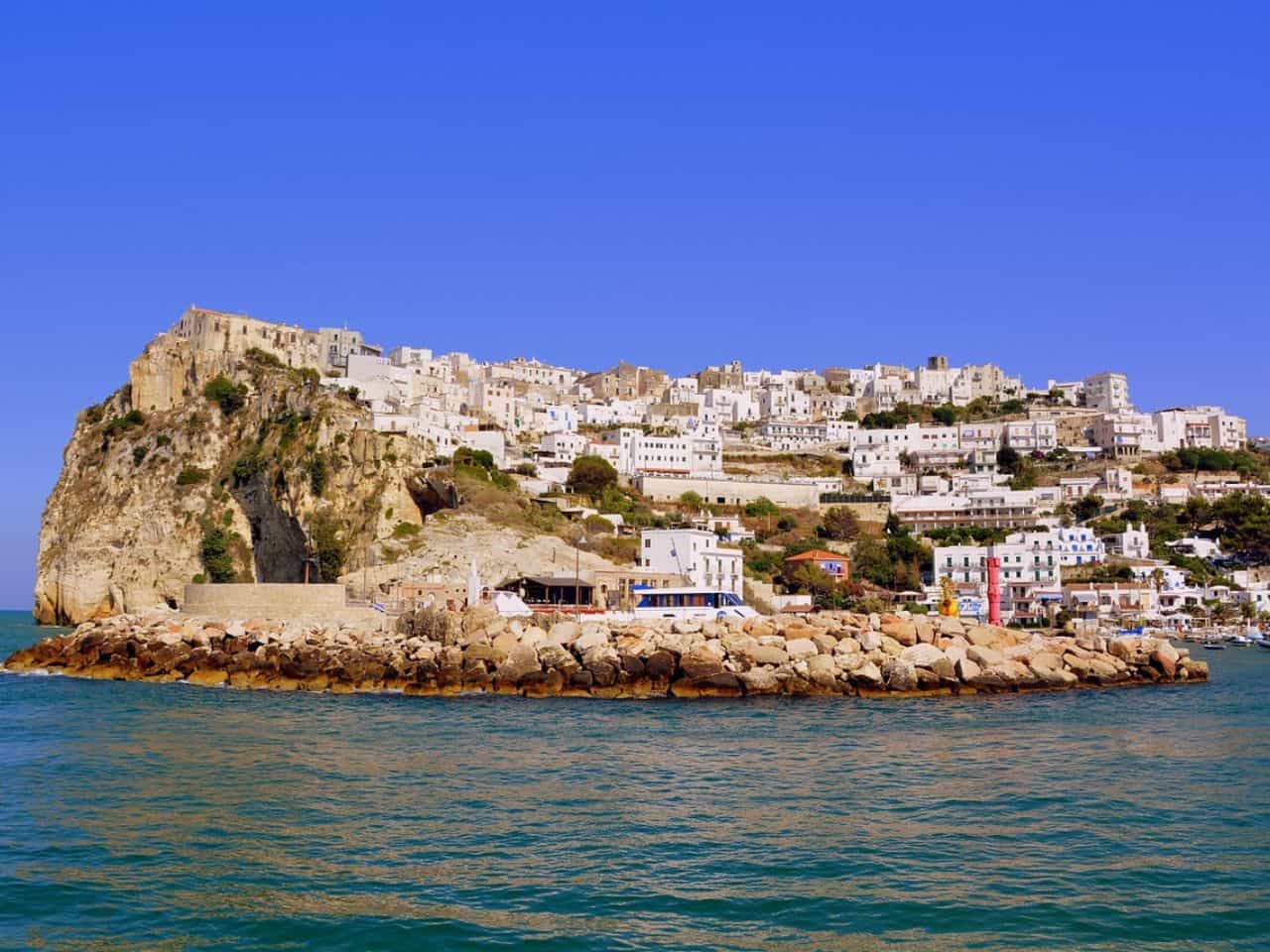
Vieste is another gem to cover in this list of best places to visit in Puglia! It is the crown jewel of the Gargano Peninsula. Nestled on a rocky promontory surrounded by the sparkling Adriatic Sea has this magical vibe, combining history with postcard-worthy landscapes.
The town dates back to ancient times, with evidence of Greek, Roman, and even Norman influences.
Its whitewashed buildings and winding streets feel like they’re straight out of a fairy tale, while the golden beaches and dramatic cliffs remind you why it’s called the “Pearl of Gargano.”
Start your journey from Vieste Castle, perched high above the sea, this Swabian castle was built in the 13th century by Frederick II.
The views from here are Absolutely breathtaking.
Don’t forget to visit the iconic Pizzomunno beach, with golden sand and crystal-clear water. Local folklore says that Pizzomunno, the massive white limestone monolith rock towering over the beach, is actually a young man turned to stone, waiting for his lover Cristalda to return!
Then there is Trabucchi, an ancient wooden fishing structure scattered along the coast. Some have been turned into restaurants where you can feast on the freshest seafood while soaking in ocean views.
Vieste is seafood heaven! Don’t leave without trying orecchiette with seafood sauce or fresh octopus.
If you love hiking and want to have a lush, cool setup just head outside Vieste towards Foresta Umbra, this UNESCO-protected forest feels like a completely different world for a shaded hike.
And if you’re into adventure, try kayaking along the coastline to discover hidden coves.
A quick tip!
To soak up the beauty of Vieste without the crowds, visit in late spring (May-June) or early autumn (September-October). The weather is still warm, the sea is inviting, and you won’t have to elbow your way through tourists. Summers can be packed, especially in July and August.
10. Trani
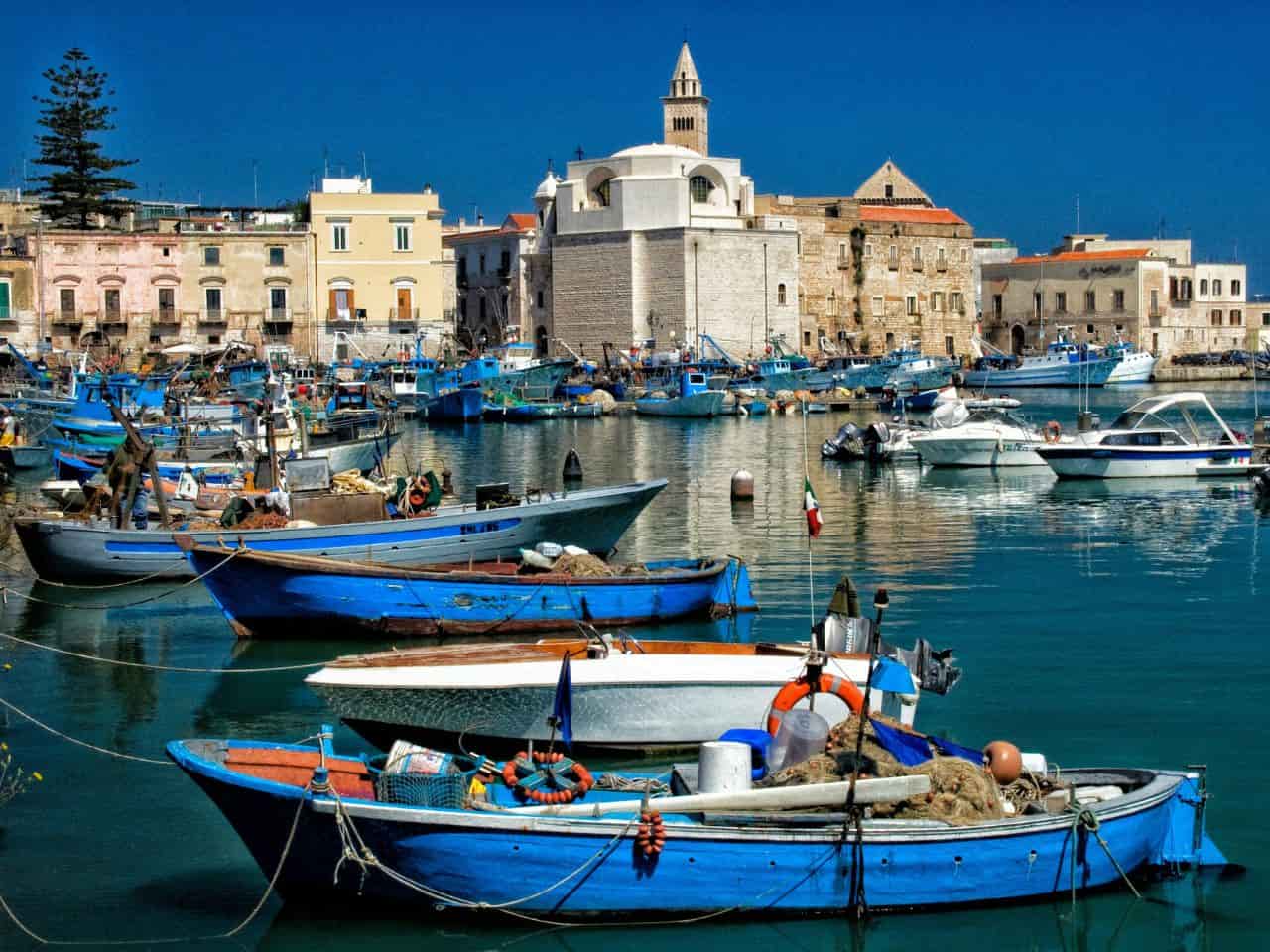
If you’re a fan of seaside strolls, historical marvels, and that perfect blend of relaxation and exploration, Trani is about to become your new favorite spot.
Sounds perfect, right?
It is quieter than some of Puglia’s bigger cities, but that’s what makes it so special-it’s got this laid-back elegance that’s hard to resist.
This place has been around for centuries, and you can feel its history in every cobblestone street. Back in the Middle Ages, Trani was a buzzing hub for trade, thanks to its strategic port. It became famous for its production of a legal code called the Ordinamenta Maris, one of the oldest maritime laws.
How cool is that!
The jewel of Trani’s history is its iconic Cattedrale di San Nicola Pellegrino. This is the showstopper, folks.
Built in the 12th century, this Romanesque masterpiece sits right by the water, and let me tell you, the view is stunning.
The cathedral has this ethereal quality, with its pale limestone glowing in the sunlight. It’s like history and beauty rolled into one. Wander inside to admire the intricate details and climb the bell tower for panoramic views of the Adriatic.
Head to Trani’s Marina which is perfect for a leisurely stroll or a sunset drink. Grab a seat at one of the waterfront cafes and watch the boats come and go-it’s pure bliss.
Don’t forget to visit Villa Comunale – a gorgeous public park right by the sea, filled with lush greenery, fountains, and shaded benches. It’s a fantastic place to relax or have a picnic.
Consider visiting Jewish Quarter since Trani has a fascinating Jewish heritage, and the narrow streets of the old Jewish quarter are packed with character. Don’t miss the Scolanova Synagogue, one of the oldest in Europe.
You can’t visit Trani without indulging in some local flavors. Start with orecchiette alle cime di rapa, a classic Puglian pasta dish. And if you’re a seafood lover, Trani’s fresh catch is next-level.
Pair it with a glass of Moscato di Trani, a sweet wine that’s a local specialty. Oh, and don’t leave without trying their almond pastries-they’re divine.
A quick tip!
If you’re not into sweating buckets or jostling with crowds, aim for late spring (May-June) or early autumn (September-October). The weather is still warm and sunny, but it’s way more chill. Plus, these shoulder seasons mean you can soak in the town’s charm without feeling rushed.
11. Castel del Monte
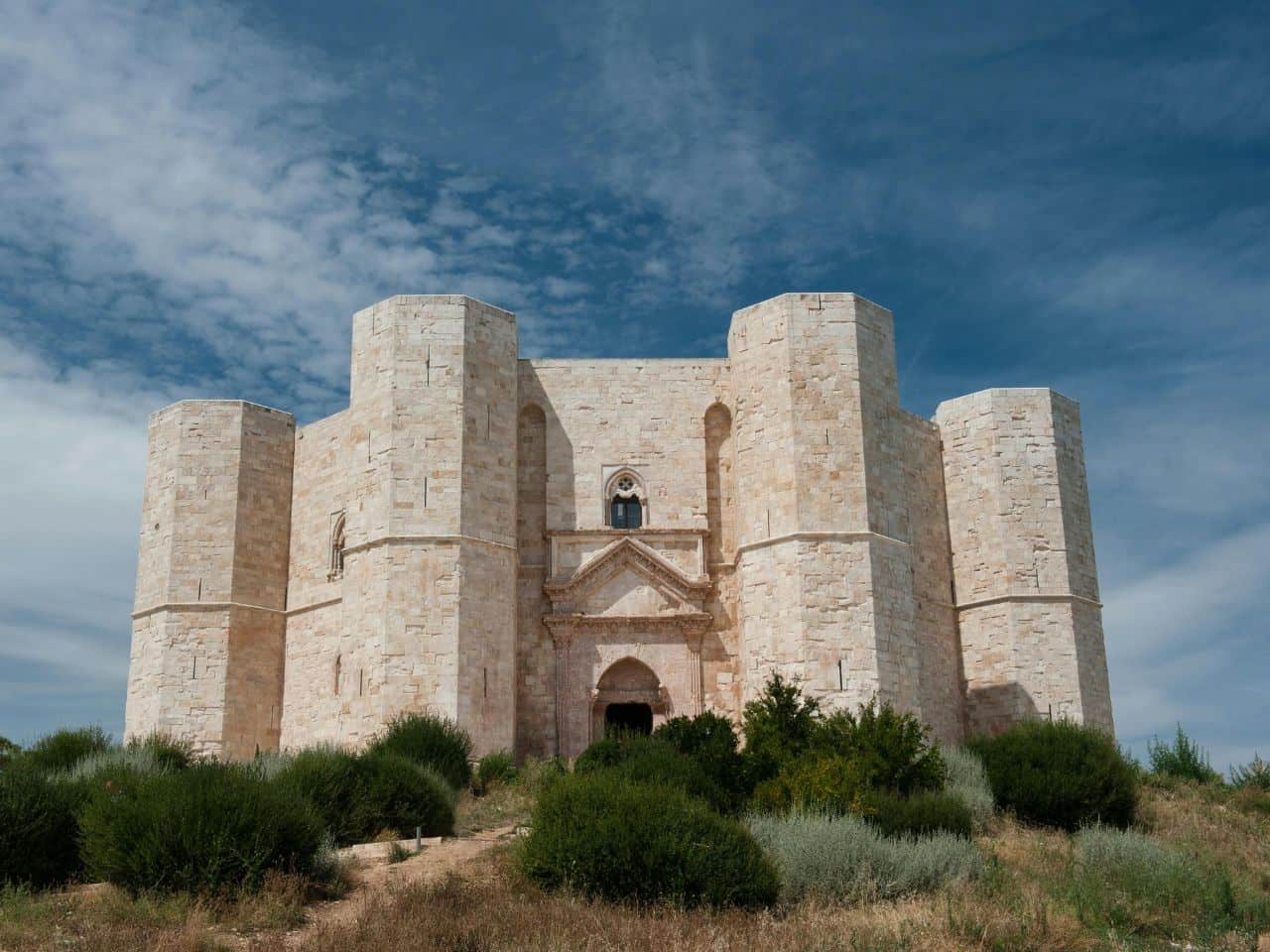
Alright, let’s talk about Castel del Monte-a place in Puglia that’s not just stunning but straight up intriguing. It isn’t your typical castle with moats and turrets.
Nope. This UNESCO World Heritage Site is more like something out of a history meets mystery novel. It’s an octagonal fortress sitting proudly on a hill, visible from miles away.
What’s so special?
Castel del Monte was built in 13th century by Frederick II, the Holy Roman Emperor. Now, Frederick wasn’t your average emperor-this guy was all about art, science, and architecture. He was known as the “Stupor Mundi” (Wonder of the World), and Castel del Monte definitely lives up to that title.
The octagonal shape? It wasn’t just for looks. Some say it symbolizes the union of heaven and earth, or maybe it’s all about those medieval numerological theories. Either way, it’s genius.
It’s not just pretty-it’s also mysterious. Historians are still scratching their heads about why it was built and what it was used for.
Was it a hunting lodge?, A mathematical marvel? Or just Emperor Frederick II showing off?
Whatever it was, it’s got a vibe you can’t miss.
Oh, and the castle wasn’t meant to be a fortress-it doesn’t even have a moat or proper defenses. Instead, it’s packed with details that scream luxury and intellect, from the ornate marble interiors to its perfectly aligned windows letting in just the right light.
The surrounding area Castel del Monte is perched in the middle of the Murge plateau, so you’re surrounded by rolling hills, olive groves, and vineyards. It’s worth taking a little hike or bike ride around for some fresh air and epic scenery.
Make a pit stop at nearby towns like in Andria or Trani. Andria is famous for its burrata cheese (yes, please!), while Trani has a gorgeous seaside cathedral that’s straight up romantic.
If you’re there in the evening, the castle’s remote location makes it an incredible spot for stargazing. Bring a blanket and soak in the celestial vibes.
A quick tip!
Want to avoid the summer heat and the selfie stick brigade? Plan your visit in late spring (May-June) or early autumn (September-October). During these months, the weather is pleasant, and the crowds thin out.
Bring your camera because this place is ridiculously photogenic, especially during sunrise or sunset when the light plays on the limestone walls. And if you’re into history and love a good backstory, a guided tour is totally worth it. Otherwise, you might miss some of the fascinating details.
12. Brindisi
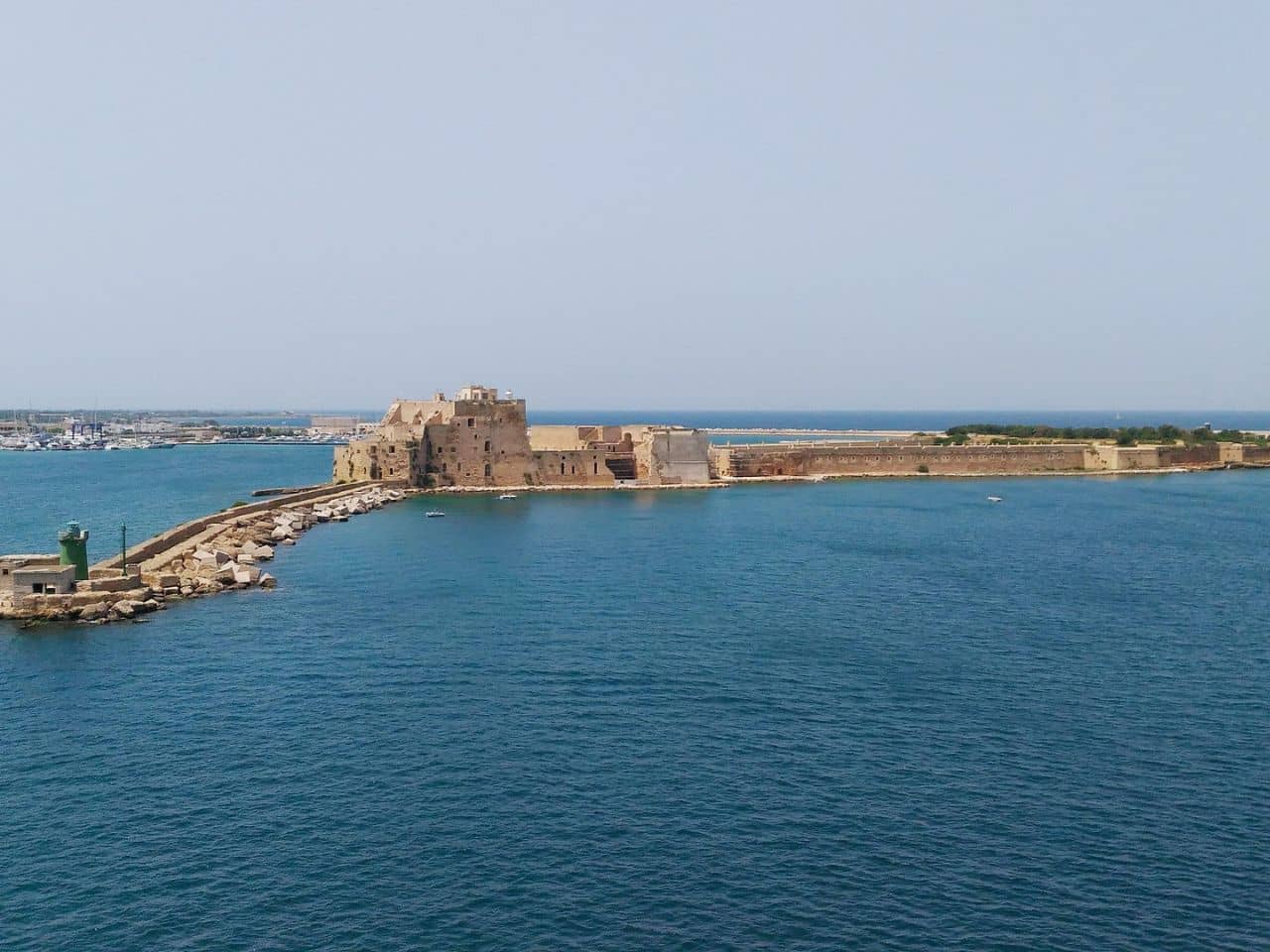
Being the most underrated gem, Brindisi has to be in your list of places to visit in Puglia! It has this perfect balance of old-world charm with modern energy. It’s often called the “Gateway to the East” because of its role as a major port town in ancient times.
Even today, you’ll feel its maritime spirit everywhere-from the bustling harbor to the cozy cafes where locals gather. What makes Brindisi special is its mix of influences: Roman ruins, medieval castles, and even a bit of Greek flair.
Brindisi’s history stretches way back to when it was a Greek settlement before becoming a key Roman port. It was the starting point of the Via Appia, the ancient road connecting Rome to Brindisi.
This made it a crucial hub for trade, travel, and military operations. Over the centuries, it’s been influenced by Byzantine, Norman, and Spanish rule, each leaving a mark on the city’s culture and architecture.
One standout piece of history? The Roman Columns at the end of Via Appia. These columns were like the ancient equivalent of a “You Are Here” marker, signaling the end of the iconic road. Today, only one column remains fully intact, but it’s still an impressive sight.
Start your visit with a stroll along the picturesque harbor. The Roman Columns are a must-see, and the views of the Adriatic are stunning, especially at sunset.
Head to Castello Svevo, aka Swabian Castle, this fortress was built by Emperor Frederick II in the 13th century. It’s got a fascinating history and offers a peek into Brindisi’s strategic importance over the centuries.
If you’re into ancient history, this museum is a treasure trove of artifacts from the area, including Roman statues and Greek pottery. Brindisi is close to some of the amazing Puglia beaches, like Torre Guaceto, a protected nature reserve with crystal-clear waters and unspoiled sandy shores.
Let’s not forget the food, because, honestly, this is reason enough to visit. Start with friselle, a crunchy bread topped with fresh tomatoes, olive oil, and oregano-it’s simple but ridiculously tasty.
If you’re into seafood, Brindisi will blow your mind. Fresh fish, mussels, and shrimp are served up in everything from pasta to risotto. And don’t forget to sip on some Primitivo or Negroamaro wine, both local specialties.
A quick tip!
If you’re aiming to dodge the heat and the crowds, late spring (April to June) and early autumn (September to October) are the sweet spots. The weather is warm but not scorching, and you can enjoy the city’s outdoor charm without feeling like you’re melting. Plus, these months are perfect for exploring nearby beaches and countryside without the summer rush.
13. Savelletri
Savelletri isn’t about flashy attractions or crowded tourist spots-it’s all about understated elegance. This charming fishing village on the Adriatic is perfect to allure in quiet harbors, quaint streets, and a coastline that seems to stretch forever.
Its history is closely tied to its role as a fishing hub. For centuries, the village thrived on the bounty of the Adriatic, with its fishermen heading out at dawn to bring in the freshest catch. Over time, its pristine beaches and serene atmosphere started drawing visitors, but it’s managed to keep its authentic charm intact.
Nearby, you’ll find Egnazia, an ancient Roman city whose ruins tell stories of a bustling port town from over two millennia ago. Walking through its remnants feels like stepping into a time machine, with traces of Roman roads, mosaics, and even city walls still visible.
Start your visit with a stroll around the picturesque harbor. Watch the fishermen unload their catch or simply enjoy the serene views of boats bobbing in the water.
Savelletri’s coastline is dotted with gorgeous beaches, from sandy stretches to rocky coves. Lido Ottagono is a local favorite, offering crystal-clear waters and a touch of luxury.
Don’t forget to visit the countryside around Savelletri is famous for its masserias-traditional farmhouses that have been transformed into luxury retreats. Many of them offer wine tastings, olive oil tours, and even cooking classes.
If you’re a golf enthusiast, check out San Domenico Golf, a stunning course overlooking the Adriatic. Even if you’re not into golf, the scenery is worth it!
When it comes to dining, this place is a seafood lover’s paradise. Think freshly grilled fish, plump prawns, and spaghetti alle vongole that tastes like the sea itself.
One local specialty you have to try is ricci di mare (sea urchin). Pair it with a crisp glass of Verdeca or Fiano wine, and you’ve got yourself a meal to remember.
For dessert, don’t forget to indulge in pasticciotto, a creamy custard-filled pastry that’s a Puglian classic. Trust me, one bite and you’ll be addicted!
A quick tip!
Visit in late spring (May-June) or early autumn (September-October). During these months, the weather is just right-warm enough for a dip in the sea but cool enough for exploring. Plus, the vibe is more relaxed, and you’ll have plenty of room to soak in Savelletri’s beauty at your own pace.
WANT TO EXPLORE MORE?
Sign up for my newsletter and I will email you every time I have something new to say!
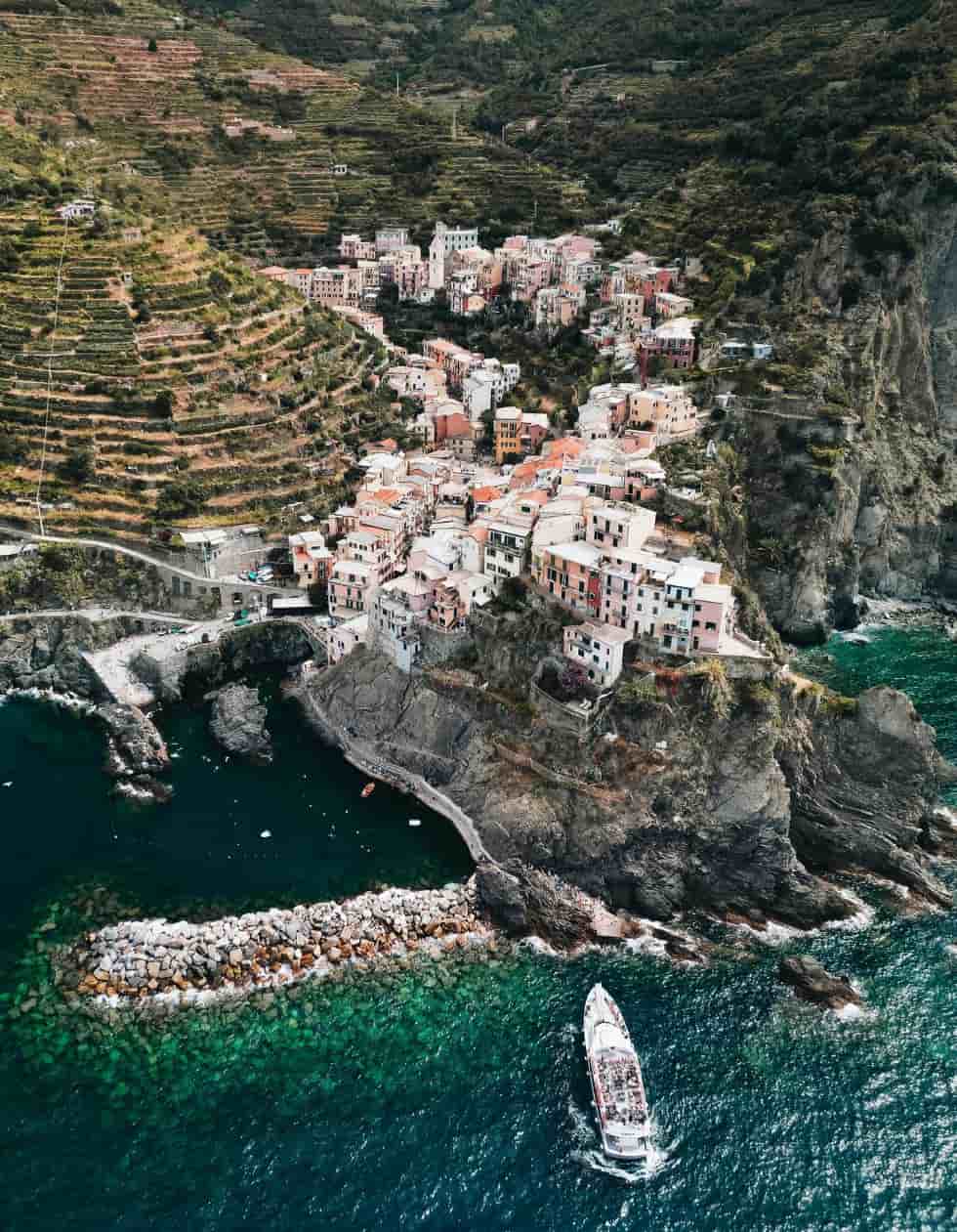
14. Tremiti Islands
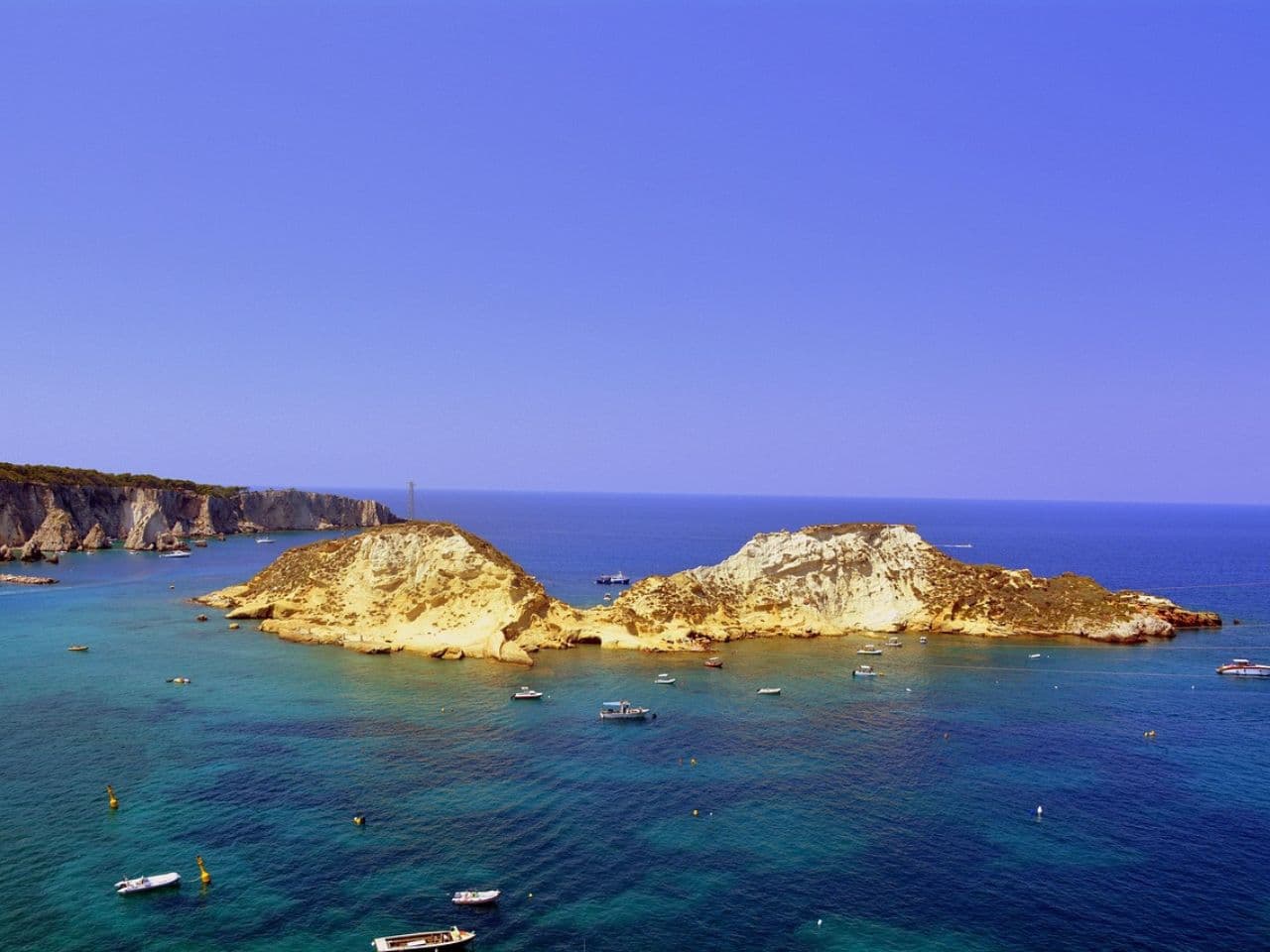
Last but not the least in this list of best places to visit in Puglia are these charming islands. They feel like a little slice of paradise, floating in the Adriatic Coastline. There are five islands in the group-San Domino, San Nicola, Capraia, Cretaccio, and Pianosa-but only San Domino and San Nicola are still inhabited.
This place has to be on top of your Puglia travel guide if you’re into snorkeling, hiking, or just soaking up the sun, these Islands deliver it all. They’re a protected marine reserve, so the natural beauty here is untouched and jaw-dropping.
The best part?
They’re still somewhat under the radar compared to other Mediterranean hotspots, so you won’t be elbowing through crowds to enjoy their beauty.
The Tremiti Islands have a fascinating past that stretches back to ancient times. The Romans called them the Insulae Diomedeae and believed they were linked to the mythical Greek hero Diomedes.
Legend has it his companions were turned into birds that still circle the islands today-how’s that for a story?
During the Middle Ages, the Tremiti Islands became a religious center. The Abbey of Santa Maria a Mare on San Nicola was built by Benedictine monks and later taken over by the Cistercians. It’s a stunning structure that dominates the island’s skyline and is steeped in mystery and history.
In more recent history, the islands were used as a place of exile during Fascist Italy, adding yet another layer to their intriguing past.
The islands’ delicacies are a truly celebration of the sea. Feast on freshly caught fish, octopus, and seafood pasta dishes. One local specialty to try is troccoli allo scoglio, a pasta dish loaded with shellfish. Pair it with a chilled glass of Falanghina or Bombino Bianco for the full Tremiti experience.
For dessert, indulge in sporcamuss, flaky pastry filled with cream and dusted with powdered sugar—it’s as delicious as it sounds.
Frequent ferries run from Puglia’s coastal towns like Termoli and Vieste. Alternatively, you can take a helicopter ride for a quick and scenic arrival.
What to Do and See on the Tremiti Islands
San Domino
- Beaches and Coves: San Domino is the lushest of the islands and is famous for its hidden beaches and stunning coves. Don’t miss Cala Matano, a picture-perfect spot for swimming and snorkeling.
- Pine Forests: Take a walk through the island’s aromatic pine forests for a peaceful escape and some incredible sea views.
- Grotta del Bue Marino: This sea cave is a must-see. Hop on a boat tour to explore its shimmering turquoise waters.
San Nicola
- Abbey of Santa Maria a Mare: This historic abbey is the heart of the Tremiti Islands’ past. Wander its ancient halls and enjoy panoramic views of the surrounding sea.
- The Village: San Nicola is quieter than San Domino, but its narrow streets and ancient walls are full of character.
Capraia and Cretaccio
- These two islands are uninhabited but worth a visit for their raw, untouched beauty. Capraia is great for snorkeling, while Cretaccio’s rugged landscape is perfect for a quick exploration.
Pianosa
- As a protected nature reserve, Pianosa is off-limits to visitors, but you can admire its wild beauty from afar.
A quick tip!
Plan your trip for late May, June, or early September to avoid the peak summer crowds and the blazing heat. The weather is perfect-warm and sunny, but not stifling-and you’ll have more room to breathe while enjoying the islands’ magic.
How To Reach Puglia In Italy?
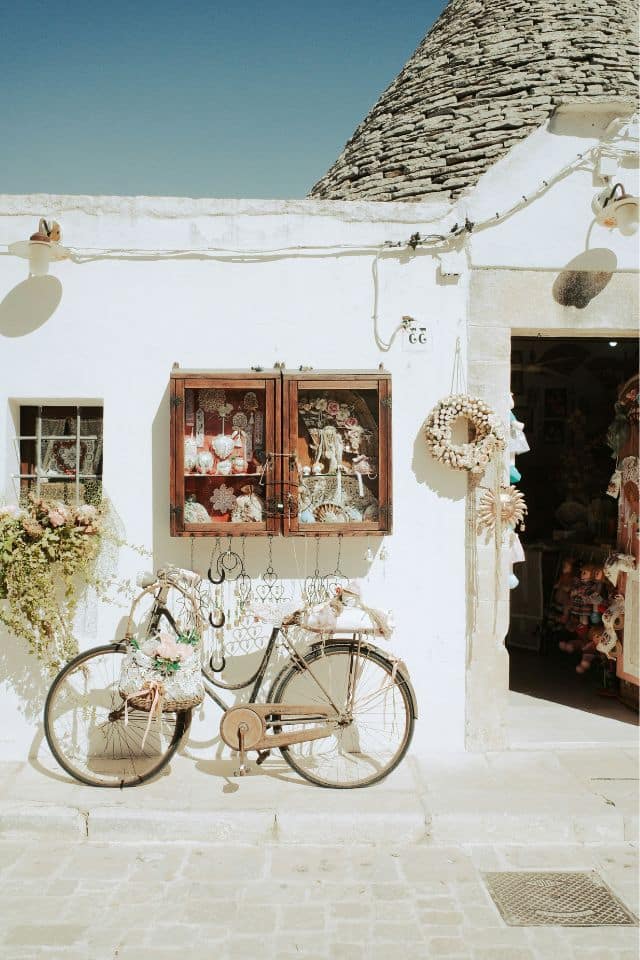
Flying to Puglia
Whether you’re coming from another country or already exploring Italy. Let me keep it simple and hassle-free for you to get to Puglia!
Flying is the fastest and most convenient way to reach Puglia. The region has two main airports:
Both airports connect to major cities in Europe and even beyond. Budget airlines like Ryanair, Wizz Air, and EasyJet often have direct flights to Bari or Brindisi from cities like London, Paris, Munich, and Barcelona.
If you’re flying from outside Europe, you might need a stopover in Rome, Milan, or Naples before hopping on a short domestic flight to Puglia.
By Train via Italy
If you’re not too far and want to skip flying, take a train! Italy’s train network connects to nearby European countries like Switzerland, Austria, and France. Once you’re in Italy, you can easily reach Puglia (more on that below).
By Ferry (If you’re adventurous)
Here’s something cool: Puglia’s ports are linked to several Mediterranean destinations. Ferries from Greece (like Corfu and Igoumenitsa) and Albania (like Vlore) can drop you off in Brindisi or Bari. It’s a slower option, but the sea views are worth it.
If You’re Already in Italy
Great news! Getting to Puglia from anywhere in Italy is super straightforward, and you’ve got plenty of options:
By Train
Italy’s trains are fast, reliable, and cover most of the country.
- From Rome: Hop on a high-speed Frecciargento train, and you’ll be in Bari in about 4 hours.
- From Naples: It’s even quicker-just 3-3.5 hours to Bari or Brindisi.
- From Milan or Florence: You’ll need around 6-8 hours depending on the train type, but the Frecciarossa or Frecciargento trains make it a comfy ride.
Once you’re in Puglia, regional trains and buses can take you to smaller towns like Alberobello, Lecce, or Ostuni.
By Plane
If you’re far from Puglia, flying might save you time. Major cities like Rome, Milan, and Venice offer short flights (about an hour) to Bari or Brindisi. Easy peasy.
By Car
Driving to Puglia is a fantastic option if you want to explore on your schedule. The region is well-connected by highways:
The best part? You can stop at beautiful spots like Matera or the Amalfi Coast on the way.
By Bus
Long-distance buses like FlixBus are affordable and connect major Italian cities to Puglian towns. It’s slower than trains or planes but great if you’re on a budget.
What’s the Easiest Option?
Bonus Tip: Moving Around Puglia
Once you’ve arrived, renting a car is the easiest way to explore the region. Puglia’s charm lies in its small towns, and having a car gives you the freedom to roam. If driving isn’t your thing, trains and buses work, but they can be a bit slow and limited.
Best Time To Visit Puglia
Believe me timing can make all the difference when it comes to soaking in these dreamy southern Italian vibes. Whether you’re here for sun-kissed beaches, charming villages, or endless plates of orecchiette, knowing when to go is key!
Spring (April to June): The Sweet Spot
Ah, springtime in Puglia is pure magic! The weather is perfect, with mild temperatures (around 18–25°C), and the countryside is bursting with flowers and greenery. It’s ideal for wandering through Itria Valley, exploring charming towns like Alberobello or Lecce, and maybe even cycling or trekking through olive groves. Bonus? Crowds are light, and you can enjoy the sights without jostling for space.
Summer (July to August): Beach, Please!
If you’re a beach bum, summer is your time to shine. Puglia’s coastline, from Polignano a Mare to the Tremiti Islands, is at its best with warm waters and sunny days. But fair warning-it gets hot (think 30–35°C) and crowded, especially in August when Italians go on their own holidays. Prices can skyrocket, too. If you’re visiting during summer, try to plan for early mornings or late afternoons to beat the heat.
Autumn (September to October): The Goldilocks Season
Autumn is hands-down my favorite time to visit Puglia. The weather cools down (around 20–28°C), the summer crowds disappear, and the whole region takes on this golden glow. It’s harvest season, so you can join olive oil or wine tastings and even visit some of the farms. Plus, it’s a great time for festivals like the Sagra della Focaccia or local grape harvest celebrations.
Winter (November to March): The Quiet Charm
Okay, winter might not scream “Puglia vacation,” but hear me out. It’s peaceful, the air is crisp, and prices drop dramatically. While the beaches are out of the question, you can explore historic towns like Lecce and Bari without the crowds. Some restaurants and attractions might close for the season, but you’ll get a true taste of local life.
My Top Picks
If you want the best of all worlds-pleasant weather, fewer crowds, and affordable prices-May, early June, and September are golden. You’ll have plenty of sunshine for outdoor adventures, but without the summer rush.
Things To Do In Puglia You Can Not Miss!
1. Bike Around the Itria Valley
Rent a bike and explore the stunning countryside of the Itria Valley. Picture rolling hills dotted with olive trees, vineyards, and those cute trulli. It’s peaceful, scenic, and a great way to work off all that pasta.
Here the trail itself is a hidden gem! It’s a car-free path that follows an old aqueduct system, winding through olive groves and countryside. It’s easy to navigate, and you’ll feel like you’re in a different world.
You’ll find plenty of rental shops in Alberobello, Locorotondo, and Martina Franca. They usually offer everything from standard bikes to e-bikes if you want a little help on the hills.
Wear comfy shoes, bring water, and don’t forget your sunscreen. Many trails are well-marked, but having a map or GPS doesn’t hurt.
2. Tour an Olive Oil Mill
Puglia is the queen of olive oil production. It’s home to 60 million olive trees-yes, that’s more than one for every Italian! The region’s oil isn’t just a kitchen staple; it’s liquid gold with a story.
The mill owners and workers are some of the most passionate people you’ll meet. They love sharing their knowledge and stories, and you’ll leave feeling like you’ve made new friends.
Head to a traditional masseria (farmhouse) to see how the magic happens, where you’ll get a front-row seat for the entire process. Watch the olives being washed, crushed, and cold-pressed while experts explain the techniques.
Here’s the fun part-sampling fresh olive oil! You’ll learn how to properly taste it (yes, there’s a technique) and discover the subtle differences between oils. Dip fresh bread into the oil, and pair it with local cheeses or tomatoes for the ultimate snack.
Plus, the aroma of freshly pressed olive oil, Unbeatable!
Plan Your Olive Oil Mill Adventure
- Pick Your Starting Point: Towns like Ostuni, Monopoli, and Fasano are great starting hubs. They’re close to many historic mills and offer bike rentals or guided trekking tours.
- Choose a Route: The Itria Valley is ideal for biking or trekking to olive oil mills. Trails here are beginner-friendly and pass through scenic countryside dotted with mills, vineyards, and trulli.
3. Hit the Puglia Beaches
- Baia dei Turchi near Otranto for its Caribbean-like vibes.
- Cala Porto in Polignano a Mare for its dramatic cliff setting.
- Pescoluse (aka the Maldives of Salento) for soft white sands and turquoise waters.
4. Explore the Caves of Castellana
Feeling adventurous? Head underground to the Grotte di Castellana, a series of incredible caves filled with stalactites and stalagmites. It’s like stepping into another world, and the cool air is a bonus on hot days!
5. Join a Wine Tasting Experience in Masseria
Puglia has been making wine for over 3,000 years-yep, even before Rome became a big deal. The Greeks introduced vines here, and the region’s sunny climate and fertile soil made it a wine paradise. During the Middle Ages, monasteries took over the craft, and by the 20th century, Puglia was one of Italy’s largest wine producers.
What’s cool? While Puglia used to focus on bulk wine (quantity over quality), things have shifted in recent decades. Now, it’s all about high-quality, rich, and full-bodied wines.
Many wineries here are more than just vineyards-they’re historical estates (called masserie) where you can take tours, learn about the wine-making process, and, of course, enjoy tastings. Some even offer farm-to-table meals with local specialties.
You won’t believe it, but Puglia’s cuisine was made for its wines. Pair a Primitivo with grilled lamb, sip a Negroamaro with focaccia, or try a Bombino Bianco with fresh seafood. It’s a flavor explosion.
And of course don’t forget to bring home a bottle or two (or ten!) of your favorite Puglian wines. Every time you uncork it, you’ll relive your trip for sure:)
More Italian Destinations
Don’t Forget To Check
FAQs
-
How many days do I need for Puglia?
Plan on 5 to 7 days to really enjoy Puglia. That gives you enough time to wander through the whitewashed towns like Alberobello and Ostuni, chill on the Adriatic beaches, and sample all the olive oil and wine the region is famous for—without feeling rushed.
-
Is Puglia expensive for tourists?
Not at all compared to Italy’s big cities. Puglia is pretty budget-friendly, with cozy B&Bs, tasty local meals, and affordable public transport. Of course, if you stay in luxury masserias or visit in peak summer, prices climb a bit, but overall it’s easier on the wallet than spots like Rome or the Amalfi Coast.
-
Is Puglia worth visiting?
Absolutely! I call it Italy’s hidden gem—think white-washed hill towns, turquoise beaches, and centuries-old olive groves without the heavy tourist crowds. It’s the perfect mix of relaxed coastal vibes and rich history, so it’s totally worth adding to your Italy trip.
-
What food is Puglia, Italy famous for?
Puglia is a foodie dream. It’s known for orecchiette pasta (little ear-shaped pasta tossed with broccoli rabe or rich tomato sauce), fresh seafood, creamy burrata cheese, and amazing extra-virgin olive oil. Don’t miss the focaccia barese or a plate of grilled vegetables drizzled with local olive oil—simple but unforgettable.
Ready To Explore Puglia?
I’m sure you’ll enjoy in Puglia more than I did; will love to hear your experiences.
Feel free to comment if you have any questions, will try to reply with more information.
And yes don’t forget to check out the most requested article on 40+ best travel hacks for a stress free vacation!
